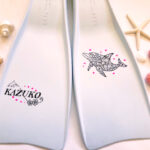Culture
The Social Side Of Japanese Diving
Japanese Dive Gear and Brands
a Japanese twist...
Divers worldwide generally use the same equipment, distributed around the globe by main diving equipment and sports companies, right?
Sure, and yet, Japan would not really be Japan with adding a twist on dive gear!
While major international brands are certainly present in Japan (Aqualung/Apeks, Mares or Scubapro, Aetc.), specifically domestic brands, some of which are rarely seen outside Japan, or more recently, outside of Asia, are highly popular, and praised by Japanese divers.
And even non-Japanese brands, such as Scubapro or Aqualung will have local Japanese branches, sometimes offering models marketed and sold only in Japan (Nihon gentei), no doubts catering to the needs of the Japanese exception (similarly, PADI Japan issues material for domestic use, such as Discover Scuba Diving program brochures, which is slightly different from that of other PADI branches, even when such material is already available in Japanese…)
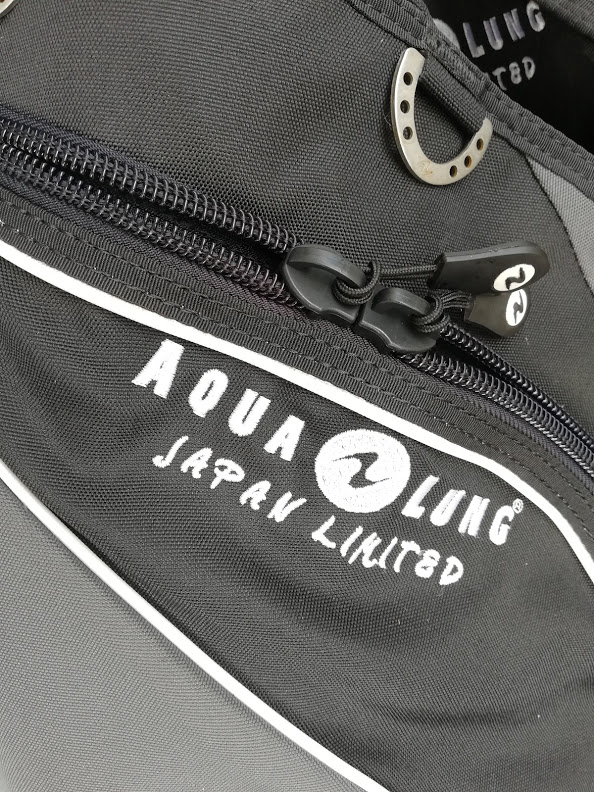

Aqualung Japan Japan Limited BCD model
Ok, there’s a little more to that. Aqualung Japan, i.e. Nihon Aqualung, was actually established in 1970 as the Japanese branch of France’s La Spirotechnique (the original recreational scuba diving equipment brand founded by J.Y. Cousteau) so they’re not exactly newcomers on the Japanese market…

Nihon Aqualung / Aqualung Japan Patch
Note: this page focuses on Japanese trends in terms of dive gear
[Click here for practical info on equipment in Japan, tank sizes, rental gear, etc…]
some trends
Let’s fast foward to the present.
As a rule, Japanese gear will be good, recent and often very stylish (especially for the ladies…).

Image source: Marine Diving marinediving.com
Recently, retro-style equipment such as masks, BCDs or fins have become somewhat fashionable, especially amongst older, experienced divers.
Retro BCD – Image source: Scubapro
Retro mask – Image source: gull.kinugawa-net.com
popular local brands
Slightly less-well known, domestic brands commonly used by Japanese divers include:
Gull, especially for diving fins, which are a real standard in Japan, from dive professionals to fun divers, and are also highly popular in other Asian countries, as are their masks
TUSA, especially BCDs and regulators
BISM – Bism regulators are highly popular with Japanese divers, as are, to a lesser extent, their dive computers

SAS and REYSON, especially Reyson BCDs, which are sturdy and highly popular with Japanese dive-professionals
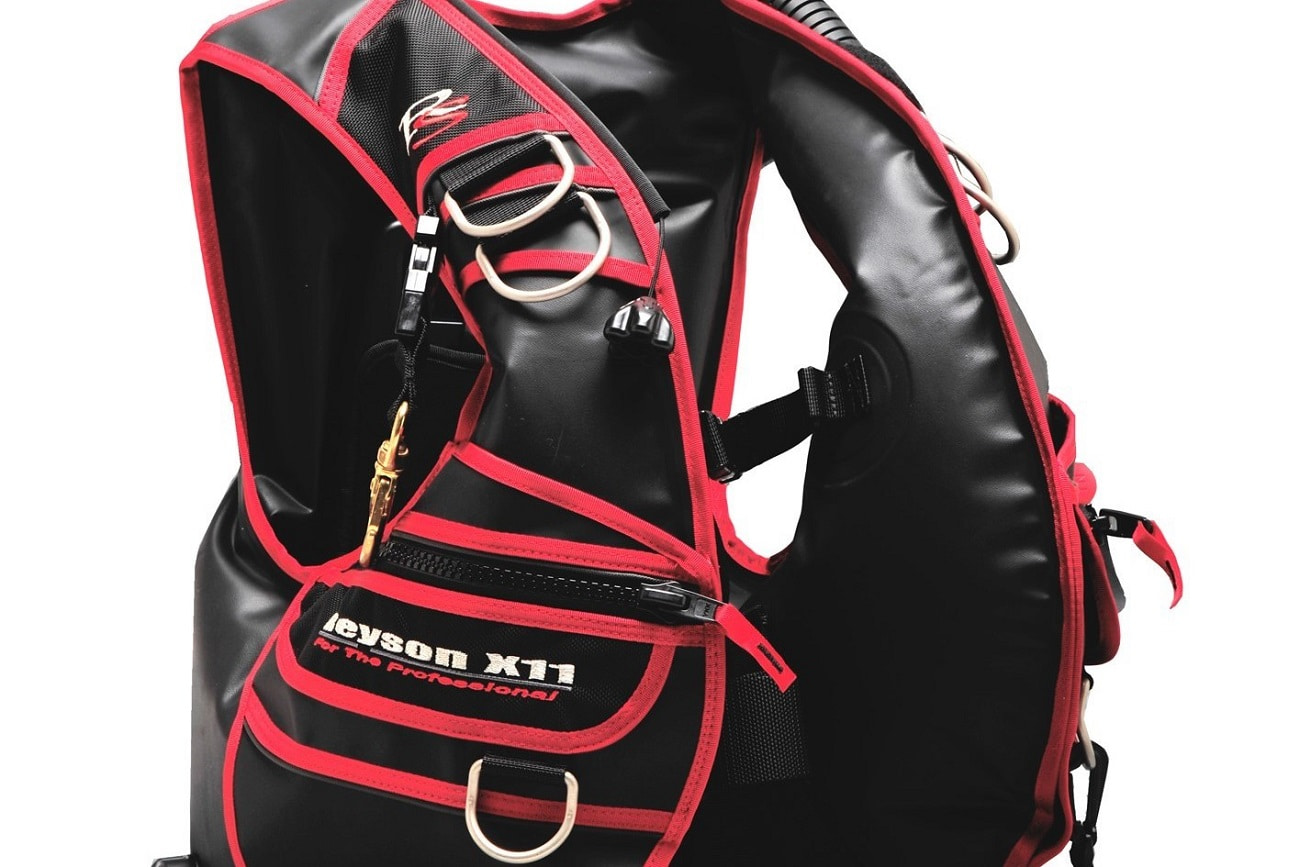
World Dive and Mobby’s wetsuits and drysuits are highly popular with Japanese divers.
Same goes for Breaker Out wetsuits, a brand which also makes surfing gear, and also AQA and formerly CocoLoa wetsuits (now rebranded as Gull), or (Turtle) Aloha westsuits or Hele-i-Waho wetsuits (yes, wetsuit makers do have a Hawaiian/surf thing going on…)
Still on the wetsuit/dry suit front, note that custom-made suits are quite popular in Japan, and easy to find (though, as all things dive-equipment, definitely not cheap)…
Japanese gear selection – Image sources: Gull Kinugawa, Scubapro, Bism, Gull Kinugawa,
fin art
Gull fins are extremely popular in Japan, and one particularity of Gulls is that the fin design and material used lend themselves particularly well to creative fin decoration, whether through homemade drawings, stencil art, or dedicated decals (the dive shop we worked for the Andaman sea had its own stylish decals for sale).
This has also given birth to an art form: fin art.
Mrs. Yurie Baba is one of Japan’s most famous fin artists, and this is her website and Facebook page
Her remarkable fin-art was feature in multiple expos since 2016, in Japan and abroad.
We saw her sea-lion decorated fins meet the real thing when we were working in La Paz, Mexico.
Here’s a little selection of various fin-art pictures found online:
Underwater Gadgets...
And Japan wouldn’t be Japan without gadgets, and yes, there are a few diving gadgets on offer in Japan…
A classic example would be Yamagata Casio’s Logosease underwater transceiver,
Japanese maker CASIO-Yamagata worked on a one-way underwater communication system that can be attached to a diver’s regular mask (sound is received through skull bone conduction), called Logosease.
While the device does work, ultrasound signal transmission is often difficult due to topography, and, more importantly, so is understanding bubble-garbled speech spoken with a regulator in one’s mouth.
This is probably the device hasn’t really caught on yet, in Japan or elsewhere (it’s been around for 10 years).
Another slight issue to keep in mind is the impact of powerful ultrasonic transmission on surrounding marine life.
But if non-full-face mask based speech devices were developped and did somehow gain traction, they clearly have the potential to take Japanese-style guided diving up a level, perhaps even killing off big-slate culture….
Indeed, the Logoseases transmission system can be rigged up for a guide to use with his or her grous of divers, which, if it worked a little better, would enable them to offer a full museum-visit like experience, think: “ and to your left, ladies and gents, you can see a big school of bigeye trevallies…” – so much for the “ world of silence”
Logoseases UW transmitters – Image sources: Yamagata Casio
More popular gadgets include air humidifiers for regulators, including the Apollo bio-filter or SAS’s Humidity Up, or special features such as extra dump valves on wetsuits and other innovations of Japanese ingenuity (“Atama no ii kuni Nippon” ™ Japan, the Clever Country)
Regulator air humidifiers – Image sources: SAS sas.official.ec & Apollo www.apollo-japan.jp
One sandal to rule them all...
The GYOSAN is said to have been initially designed for fishing purposes in Okinawa and Ogasawara, and is a rock-solid and truly non-slip flip-flop, and worn by Japanese dive pros and divers around the globe.
Having gone through a few pairs ourselves (Ben is a 4L size..), they are great, probably the best alternative to watershoes for working in wet environements..

Gyosan presentation – Image source: globalgyosannet.jimdofree.com/gyosan/
Pink Ladies...
And beyond the brands themselves, some other aspects stand-out when it comes to Japanese diver gear.
First, let’s mention the colour matching action, especially for gear aimed at female divers.
Let’s face it, most dive gear manufacturers worldwide are still ratr immune to the idea of downplaying gender roles in commercial products, you know, pink-for-the-ladies and blue-for-the-boys, but Japan, is on whole different level of no hold-barred gender coding – Certainly, Sweden Japan is not…


Image source: marinediving.com/equipment/mask/color_and_form/
Image source: blog.mic21.com
All for the dive fashionista – Image source: miyagino.biz/osusumekizai.html
Think hot pink drysuits or wetsuits, cute BCDs with flowery designs and other adorable “lady-like” option abound in the Japanese dive gear world.
You’ll find amazing colour options (purples, oranges…) in dive gear aimed at women, allowing for some serious colour matching.
The amazing diving grannies we met in Raja Ampat all had pink to purple flowery wetsuits with matching booties (which might indicate Japanese makers might take age groups aesthetic preferences into account as well – which is probably smart move given Japan’s aging population, divers included).
One would not expect less from such a stylish country, with still rigid gender roles, and even a publication aimed at the diving ladies to hype it all up (Marine Diving’s LaScuba magazine)


Image source: Marine Diving https://marinediving.com/books/1905_lascuba/
taking the (underwater) mickey...
Cute animal hoods, while still highly popular with divers from other Asian countries, are (luckily…) on the decline in Japan.
Oh they’re still around, mind you, being kawaii and all that, but somehow never reached the popularity they currently have elsewhere…
Image source: www.marea-ikebukuro.jp
Image source: blog.livedoor.jp
Similarly, technical or technical looking gear, with quintessential brands such as Halcyon that highly popular in other Asian countries (Korea, Taiwan, Malaysia, Hong Kong, Thailand, mainland China…) has not yet really caught-on in Japan, where diver choice is still largely oriented by the conservative recommendations of instructor, shop and diving publications.

A great place to get an idea of brands, models and prices (!) of dive gear currently sold in Japan is Mic21, which is one of the biggest retailers of dive gear in Japan.

Image sources: www.mic21.com
Snorkels, suits and gloves...

Image source: chibadiving.com
On a more cultural note, we have to mention snorkels, suits and gloves.
As a rule, people dive in wetsuits and, more often than not, with gloves.
Diving gloves are big in Japan, which is certainly understandable with the country’s temperate to cold winter waters, and the still common conception that holding on to rock (lying on sandy bottoms) is perfectly fine…

But it probably goes beyond that. Protections abound in Japan, the sun is strong in the land of comprehensive sun gear and people do cover up, for agriculture, hiking, and pretty much all outdoors activities.

Underwater is no exception – and it’s a good thing people are becoming more aware of the impact of sunscreen on marine life, as Japanese divers, especially women for cultural reason depreciating suntans, are heavy sunscreen users).
Not only do most Japanese divers cover up for sun and thermal protection, with everyone diving in wetsuits (which is more than reasonable, we’re both resolutely wetsuit divers who always get cold), but gloves are commonly provided/worn, even in warm water areas, from stylish dive gloves to gunte, cheap work gloves.
Let’s face it, gloves-wearing does encourage touching in most cases, which is less much of a problem in Japan’s rocky areas, but doesn’t translate that well on coral reefs, or in national parks and protected areas abroad, where not only no-gloves, but actual no-touch policies are becoming increasingly common.
It is just one of those things, shared with other Asian countries as well, which we hope will evolve in the future…
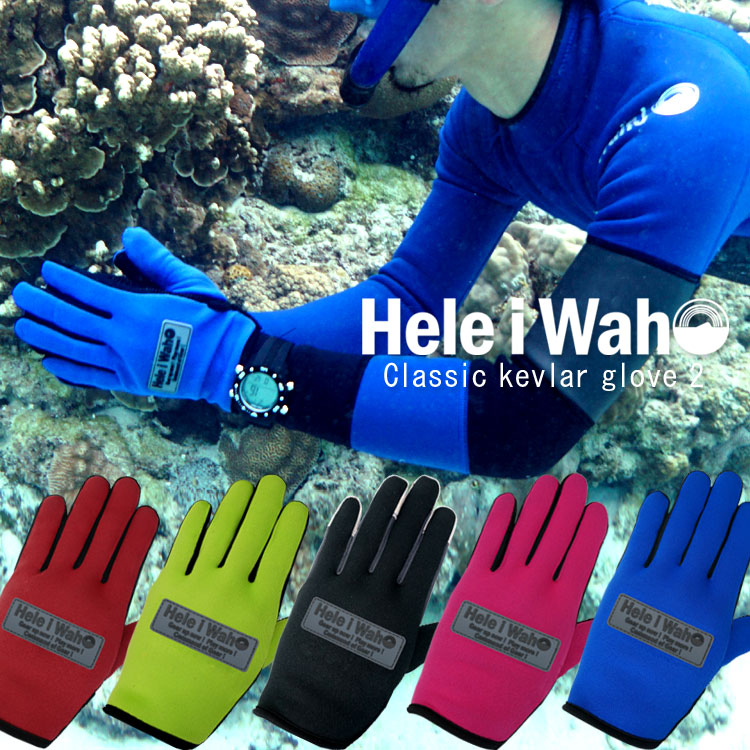
Just be aware of it.
In our professional experience, we’ve never real issues with Japanese divers and glove-wearing – as long as it was explained, during the pre-dive briefing, that they were going to dive in a no-glove and/or no-touch area (and as divers, while accidents do happen, we should all aim for contactless diving if possible), the message was heard and understood and gloves stayed on the boat.
But if you dive in Japan, you might actually be offered a pair of gloves in certain areas, and you might get to see more tactile diving than you’re used to…
Snork snork – Image source: www.nta.co.jp
Carrying a snorkel is part of RSTC training standards.
Diving instructors and their students are required to carry a snorkel as part of their diving equipment during training courses (RSTC standards are only given for training, not for “fun-diving”).
And the entry-level courses themselves make use of the snorkel in various exercises (snorkel to regulator exchange, 5 point descent, “skin diving” in the PADI Open Water Course, for instance)
However, many certified divers, especially where current diving is common, choose to not have a snorkel attached to the masks when fun-diving, as it does increase the risk of having the mask ripped off, especially in current, and is an entanglement hazard as it dangles next to your face, and chose to carry on in their pocket, or even dive without one, unless planning for long surface swims. It’s a well known moot points, with pros and cons (see here and here for instance)
In Japan however, many divers keep the snorkel attached to their masks, which is no doubt due to prevalence of shore entries, and the fact that many sites are neither current nor drift dives.
It seems to be much more common than elsewhere.
A recent poll by Japanese diving platform Oceana found that 49% of respondents dived with a snorkel, 30% without and 20% on a case-by-case basis.
marketing oddities, or lost in translation?
Some Japanese brands are not only less common elsewhere, they sometimes feature slightly surprising (quirky…) marketing that Japan is well known for, where makers seemingly make a point of not having their material proof-read by native-speaker, even when branding products in the English tongue.

A diving video light might be called the RGBlue VM2 BLACKBODY, and regulators might read slightly quizzical statements such as “Legend of (the) Bism™”.
This last example always made non-Japanese staff wonder if it meant something like the Bism’s equivalent of the famous Aqualung Legend regulator, or that this Bism regulator model was so good it was legendary, or that it was something of heroic fantasy inspired approach to product presentation, plunging divers into Bism’s universe of underwater quests, not unlike Nintendo’s Legend of Zelda…
There are probably ways to find out if we really wanted, but we’ll hang on to this branding mystery for now…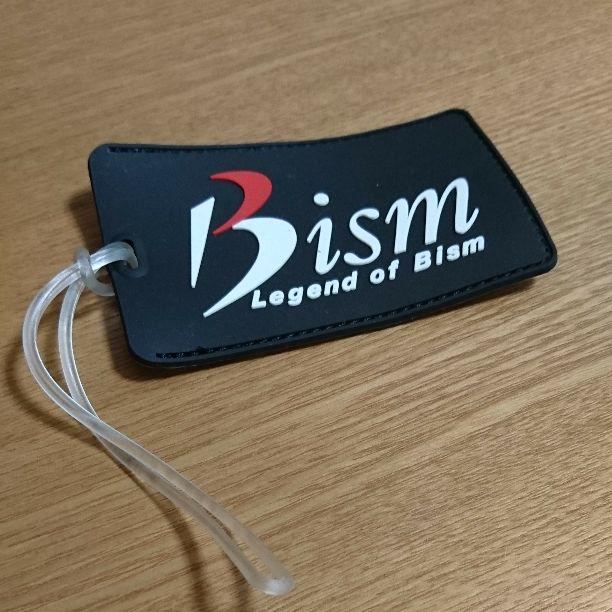
Image sources: www.bism.co.jp
Another equally puzzling brand name is the Breaker Out ™ brand of wetsuit and associated items.
Such a dynamic sounding name had non-Japanese staff wondering if it was some sort of reference to breaking out of the prison of everyday life for a dive adventure, or perhaps if diving in this wetsuit meant that one was diving away until all the circuit breakers had popped out, short-circuited by the excitement of it all…
Then again, they also make surfing wetsuits, so it’s probably got something to do with breaking waves being out, i.e. surf’s up? Who knows…


Image source: breakerout.com
However, when it comes to linguistic oddities, our favourite dive gear brand has to be SAS.
Sure, it’s a slightly more sober brand name, which brings to mind both the famous English Special Forces (who do dive, so there) and Scandinavia’s flag carrier, airline of choice for all air travel around Denmark, Sweden and Norway…
Yet SAS products do have some of weirdest (motivational?) quotes on them, typical of kazari-eigo (飾り英語), the quirky, largely nonsensical variety of English used to decorate Japanese products… (more on this here)
Great for a laugh a 7 in the morning, setting up equipment on a dive boat, trust us…
We don’t really know the brand’s history, other than SAS’ Japanese history began in 1976, as the local branch of a US equipment maker.

Ab fab (somewhat) – Image source: sas.official.ec



















